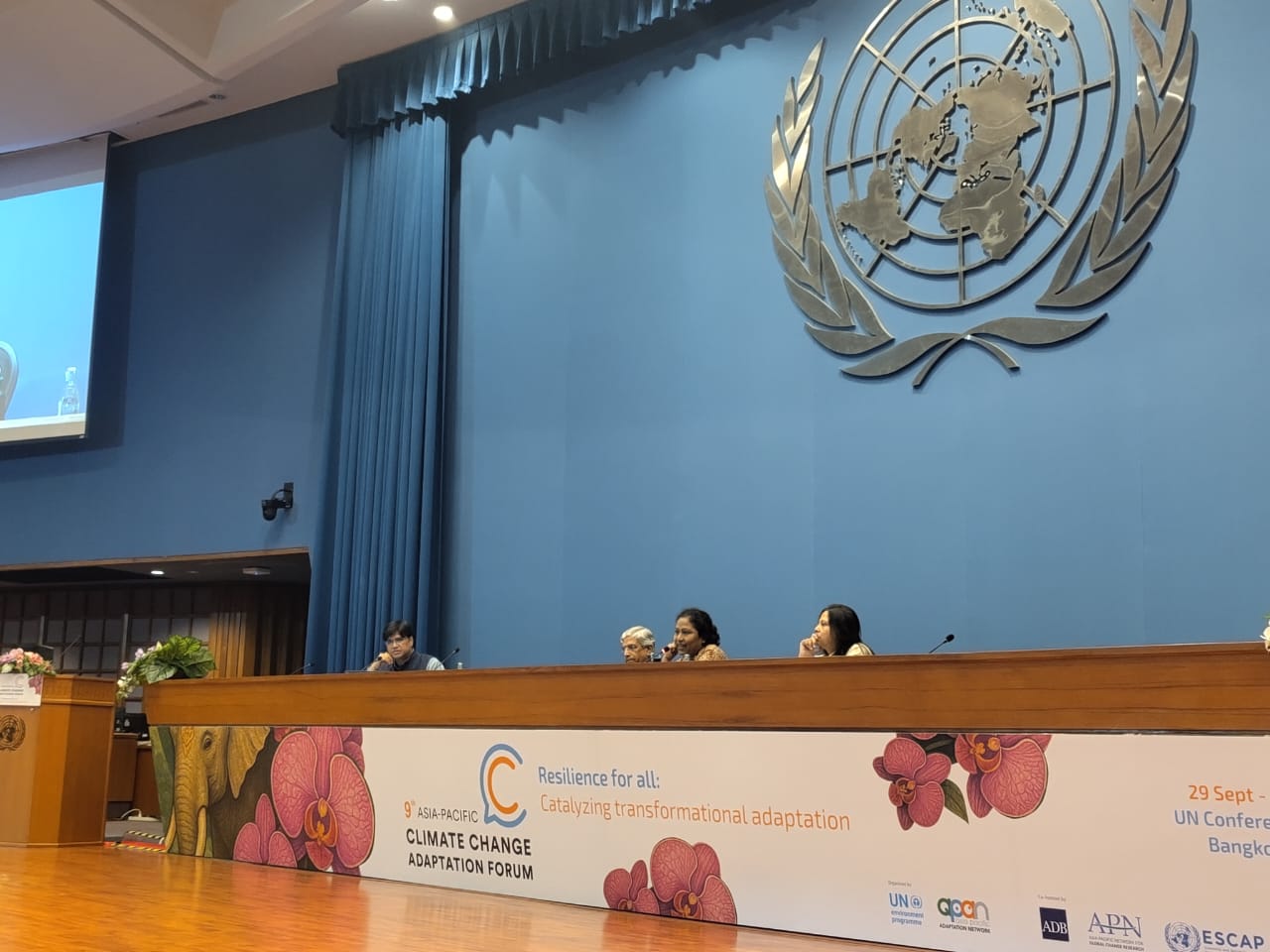9th APAN Forum: Cities on the Frontline- Building Urban Resilience to Extreme Heat
Extreme heat is fast emerging as one of the most urgent urban crises, threatening lives, health, and economic productivity across Asia and the Pacific. Cities, where populations and infrastructure are most concentrated, are at the frontline of this crisis and must drive resilient and scalable solutions.
It was in this context that the UNEP Cool Coalition and the National Institute of Urban Affairs (NIUA) convened a session at the 9th Asia-Pacific Climate Change Adaptation Forum on “Cities on the Frontline: Insights from India and the region on long-term mitigation of extreme heat in cities.” The dialogue brought together national, state, and local perspectives alongside global insights to showcase how integrated approaches can help cities build lasting resilience.
From emergency response to systemic resilience
Opening the session, S. Rakesh Kumar, Joint Secretary, NDMA, described India’s journey from responses to structured heat governance. He explained how national advisories, operational guidelines, and financing mechanisms such as the National and State Disaster Mitigation Funds are enabling states to expand heat action plans and pilot innovative cooling measures. These efforts are helping India move beyond short-term emergency response toward embedding resilience into long-term development pathways.
Integrating resilience into planning
Raman Kumar Singh, Senior Urban Development Specialist, NIUA highlighted that urban planning is now becoming a central tool for climate adaptation. Through the NIUA-GIZ strategic partnership for supporting the implementation of the Sustainable Urban Development in Smart Cities II (SUDSC II), several initiatives were devised at state and city for disaster risk reduction through integrated spatial planning processes. In addition, hundreds of officials have been trained in data-driven and spatial planning tools. This approach ensures that resilience is not treated as a separate agenda but is woven into the daily governance and decision-making of states and cities.
Global lessons, local action
Benjamin Hickman, Programme Manager, UNEP India broadened the lens, underscoring India’s pivotal role in tackling extreme heat globally. He shared lessons from Swiss Agency for Development and Cooperation (SDC) BeCool India Project, where Tamil Nadu’s recognition of heat as a disaster has unlocked financing, and Chennai’s master plan now includes granular heat risk mapping and passive cooling measures. He stressed that urban planning reforms, when combined with building-level interventions such as cool roofs and shading, can deliver resilience alongside energy savings.
Panel Discussion: Translating vision into practice
The panel discussion brought these perspectives together, focusing on how to scale practical solutions through inclusive planning, strong data systems, and innovative financing.
Moumita Shaw, Urban and Regional Development Advisor, GIZ India emphasized the importance of locally grounded and socially inclusive approaches. Drawing on work in developing Gender Responsive Urban Climate Resilience Strategy for Telangana and Karnataka, under the Sustainable Urban Development Smart Cities II (SUDSC II) project implemented by GIZ on behalf of the German Federal Ministry of Economic Cooperation and Development (BMZ) along with the Indian Ministry of Housing and Urban Affairs (MoHUA), she highlighted how participatory planning, gender-disaggregated data, and green-blue infrastructure are critical to ensuring that resilience strategies prioritize the needs of the most vulnerable, particularly women, children, and marginalized communities, and are effectively integrated into urban planning processes.
Rajesh Sharma, Programme Specialist- Disaster Risk Information and Application, UNDP spoke about the critical role of risk data and early warning systems in enabling cities to act proactively rather than reactively. By embedding risk analysis into urban planning, he noted, cities can identify heat hotspots, protect vulnerable populations, and guide investments across health, energy, and transport sectors.
On the financing front, Parimita Mohanty, Senior Programme Manager, UNEP Asia and the Pacific stressed that new funds alone will not be enough to meet the scale of the challenge. Instead, cities must tap into existing streams by blending public, private, and community-based finance. She outlined examples ranging from retrofitting affordable housing to leveraging bank credit lines and microfinance instruments. She emphasized that ensuring access to financing for the most vulnerable is key to achieving equitable resilience.
A shared vision for resilient cities
Taken together, the interventions highlighted that mitigating extreme heat is not the task of one sector or level of government alone. It requires enabling national frameworks, integration into state and local planning, inclusive community engagement, robust risk data, and innovative financing mechanisms. The session emphasized that when these elements align, cities can move beyond emergency response to systemic resilience. By fostering collaboration across sectors and levels of governance, Indian cities and others across the region can emerge as leaders in climate adaptation, advancing inclusive and locally anchored solutions to one of the most urgent challenges of our time.

